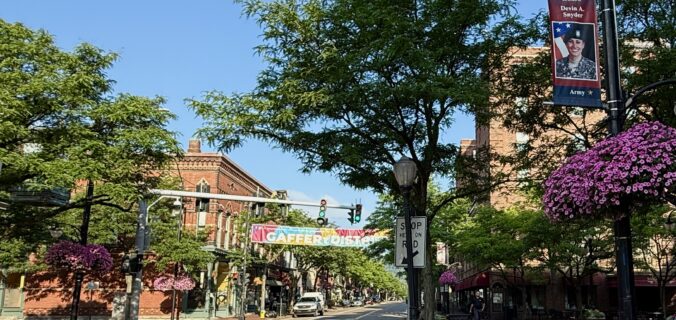
Vistas that seem to reach forever with the fervent green layers of trees bordering a wide expanse of iridescent blue water that follows the winding road and an azure blue sky above beckon the three of us to journey along the two largest Finger Lakes, Seneca Lake and Cayuga Lake, as well as Keuka Lake, in Upstate New York. We were off to explore some of the more than 180 wineries along these lakes.
Visiting a good friend who moved to a new home for half the year in Corning, New York, was just the excuse Sandi and I needed to trek across the country. Little did we know what a charming town Corning would be. Then, throw in some unique and delicious wines of the region, and we found a perfect trip for a week.
Waking up the first morning of our stay, we hear the distant blast of a low whistle sound. It happens again a little later. We are not aware of any trains nearby or any ships traveling on a nearby body of water. Kris, our host, tells us the sound is the Corning Whistle, first constructed in the 1880s to alert employees at the Corning Glass Works plant that it was time to start work, break for lunch, or end their shift. Today, it continues as tradition and goes off eight times a day.
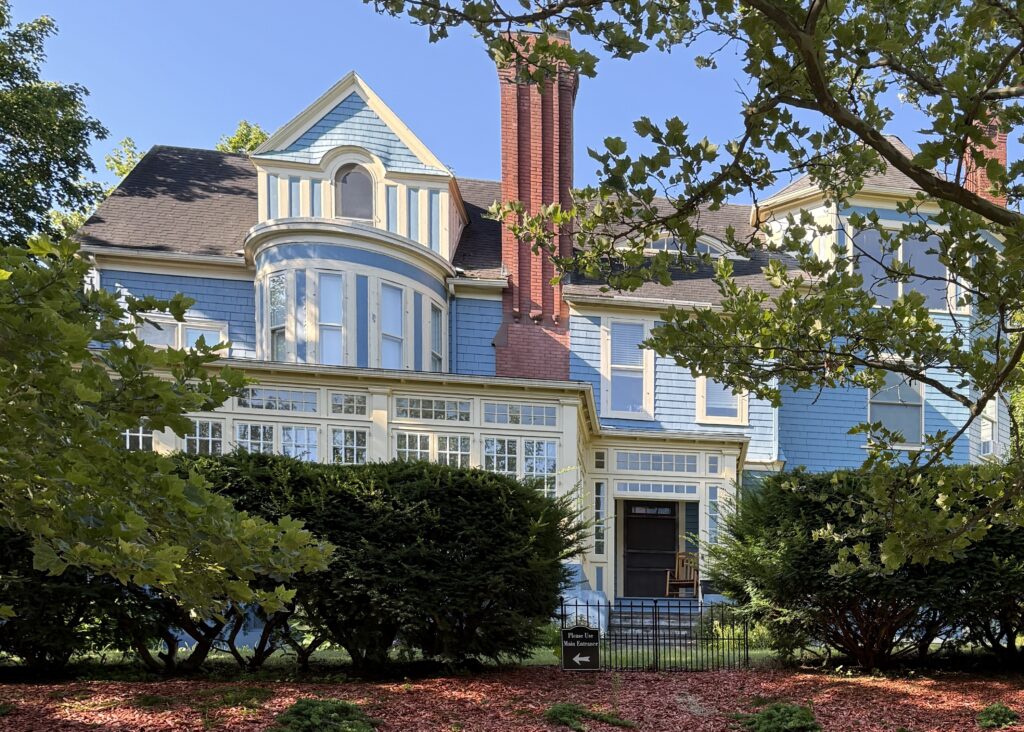
Charm best describes Corning, a town of approximately 10,000 residents. We stay with Kris on a hilltop, the Southside Historic District, composed of Victorian and Greek Revival mansions. We believe these homes were built for the heads of the Corning Glass Works plant, the business around which this town was founded.
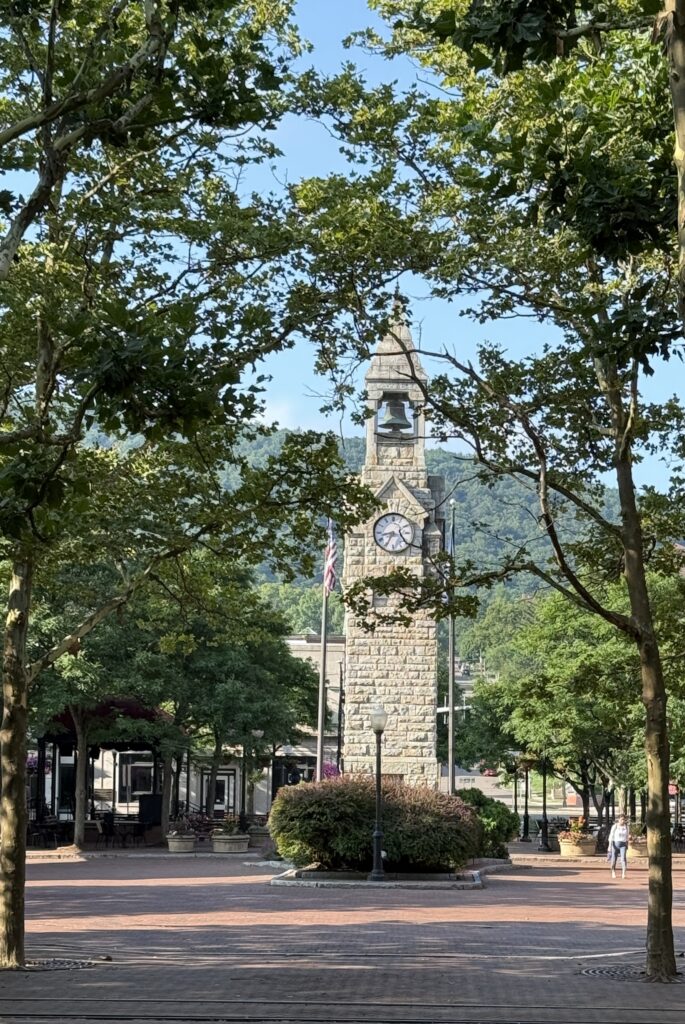
We trek to the Gaffer District, the center of the town, where a sculpture of a gaffer–a glass blower–sits in front of the Centerway Clock Tower.
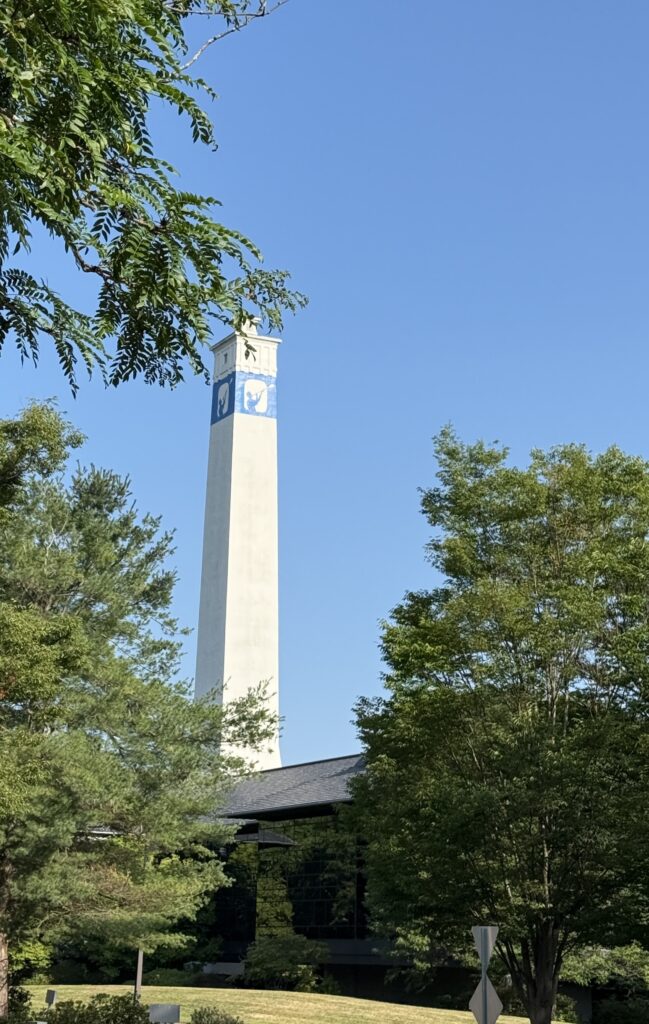
Nearby is a very prominent tower. We learn it is called the Little Joe Tower, rising 185 feet tall. This tower was originally used in a vertical draw process to produce long glass tubing for thermometer tubes.
As we walk along the Centerway Square under a canopy of trees, we arrive at a historic archway that incorporates architectural elements of the company’s former headquarters constructed in 1925. It remains from the original Corning Glass Works. This archway frames Corning Incorporated headquarters, a modernist designed building built in 1993 with Japanese-influenced low-rise pavilions.
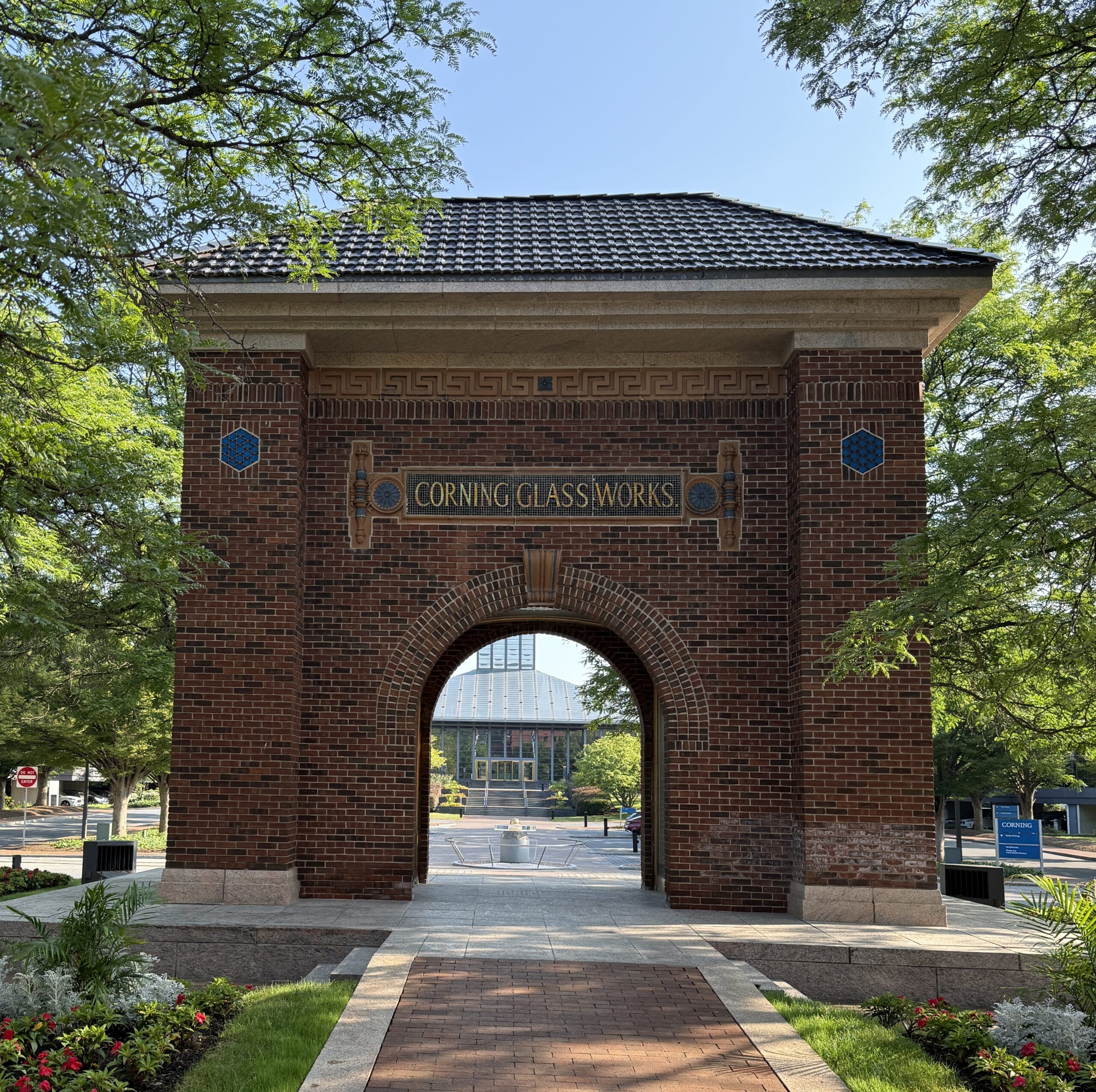
Of course, the highlight of a trip to Corning is the Corning Museum of Glass. Our personal tour guide, Darby, who worked at Corning and is a gaffer, leads us through the fascinating history of Corning Glass from its inception making railroad signal lantern glass and light bulb glass in the 1850’s to Pyrex in 1915 and low-loss glass for television picture tubes and CorningWare in the early 1950’s.

Since then, Corning has produced silica glass for telescope mirrors and space applications (including Palomar Observatory) and optical fiber for data transmission. From 2007 onward, Gorilla Glass was a focus used in Apple iPhones. They produce pharmaceutical glass vials known as Valor Glass (used for Covid vaccine) as well as other pharmaceutical needs. Valor Glass allowed vaccine filling lines to operate at nearly double production speeds.
Not to be overlooked are the colorful and fluid lines of blown glass display pieces found in the museum that creative gaffers produce even today.
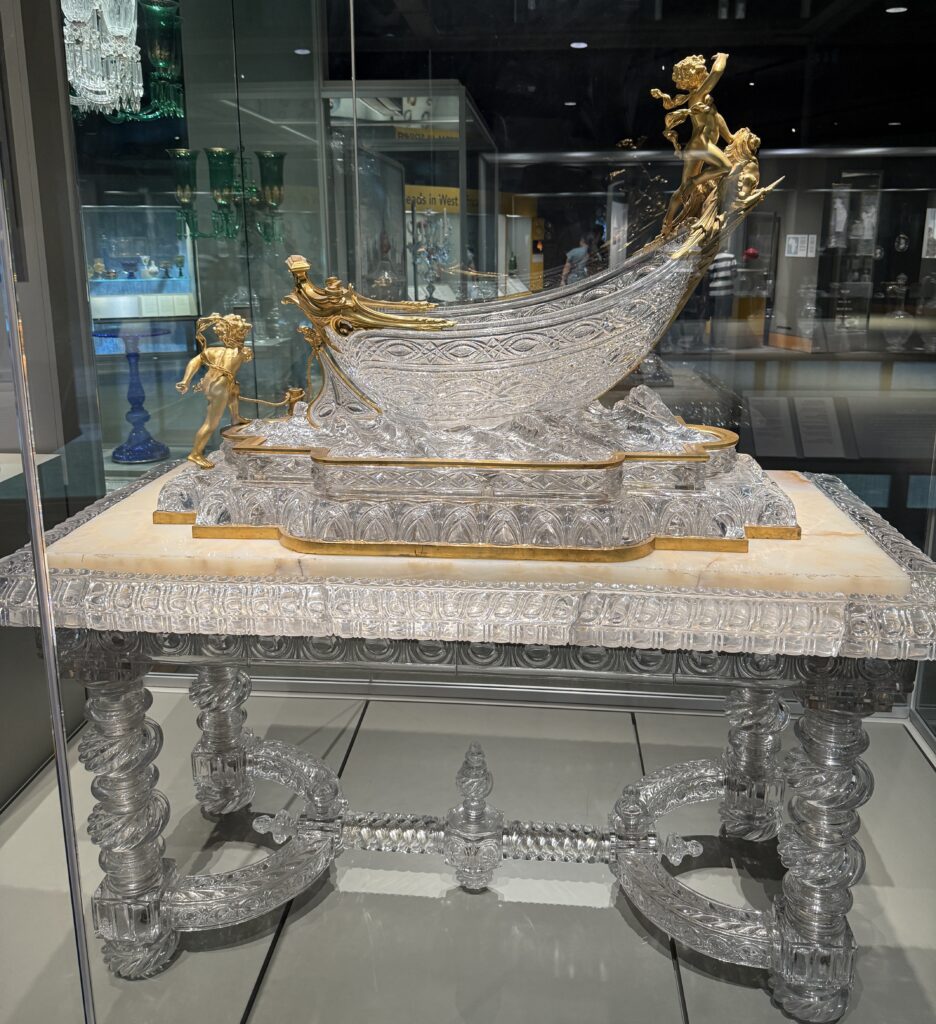
We learn there are several unique museums in addition to the Corning Museum. We visit the Rockwell Museum, the Heritage Village of the Southern Finger Lakes, and the Finger Lakes Boating Museum.
The Heritage Village of the Southern Finger Lakes centers around the Painted Post Tavern, the oldest existing tavern in the Lands of the Painted Post and restored to welcome visitors to Heritage Village. On our visit, displays of dresses dating as far back as the 1890s set alongside glass pieces showcase and highlight the artistic partnership between fashion and glasswork.
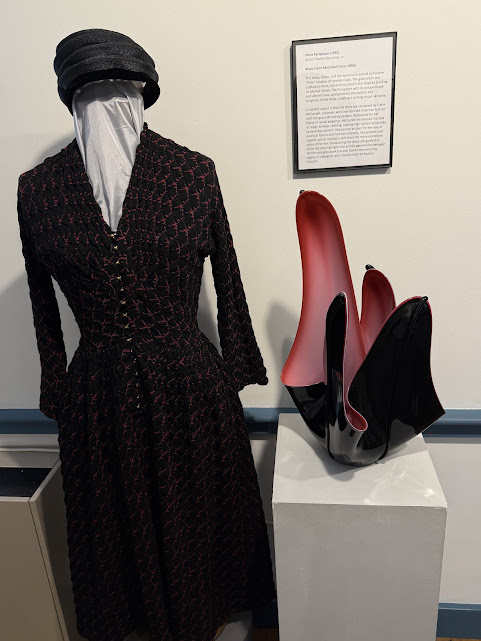
We tour Keuka Lake on the Pat II (first a tour boat from 1924 and then a mail boat until 1991) that was restored by the Finger Lakes Boating Museum starting in 2014 and returning to the water in 2021. A trip to the Finger Lakes Boating Museum offers up the history of boats so vital to the Finger Lakes. We are enthralled by the wooden boats of the past.
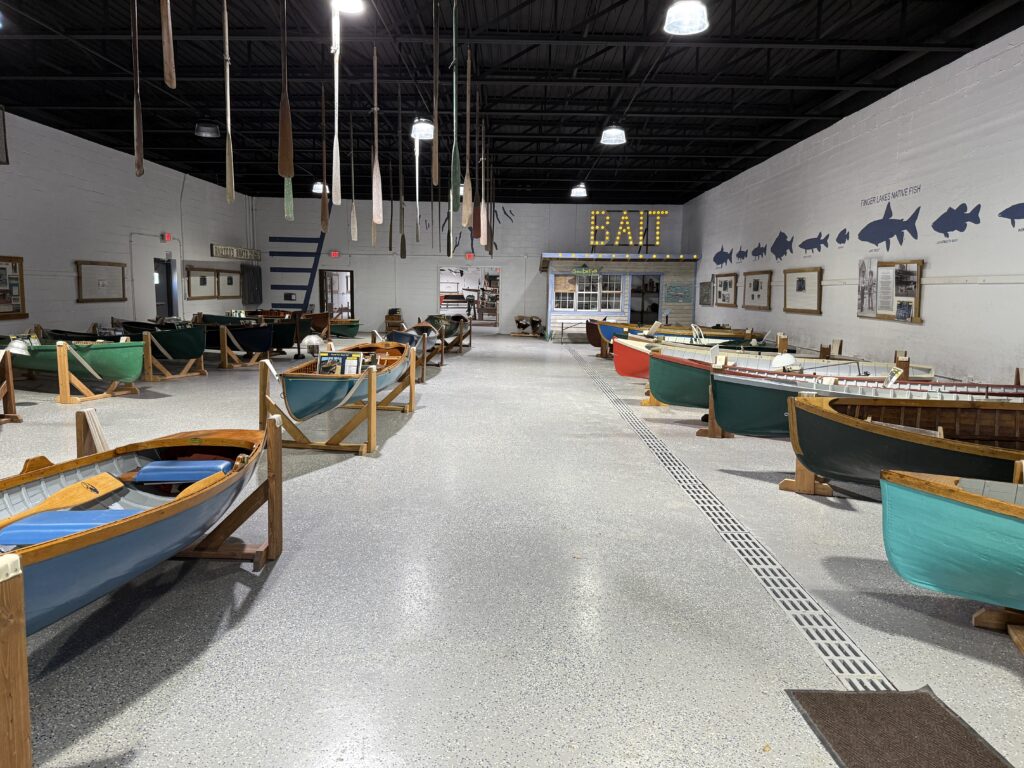
Wine awaits us along the Finger Lakes in Steuben County. No wine tour would be complete without a stop at Dr. Konstantin Frank Winery.
Dr. Konstantin Frank is the pioneer of the Eastern United States vinifera movement, a movement called the Vinifera Revolution. This movement and Dr. Frank brought the European wine grapes to this part of our country when no one thought it was possible for them to grow in the Northeast. We enjoyed tastes of those varietals, Chardonnay, Pinot Noir, and Cabernet Franc. Sparkling wines and Riesling paired well with a variety of cheeses we were served. The view of the rolling hills and Keuka Lake visible as we sampled these wines is spectacular.
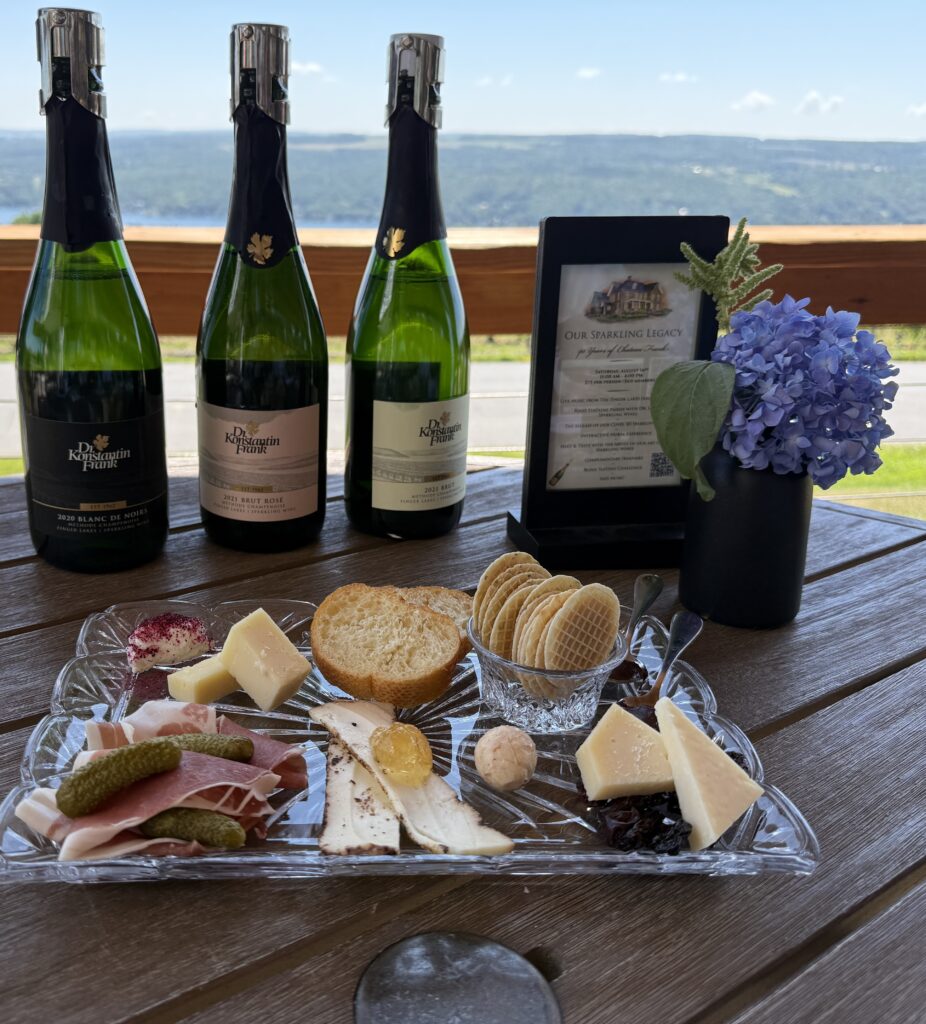
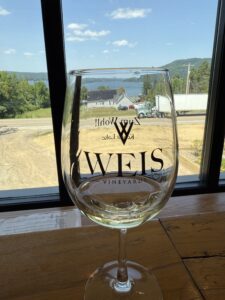
Weis Vineyards, voted New York State Winery of the Year in 2022, 2024, and 2025, was our next stop. Hans Peter Weis, a native of Mosel, Germany, worked for Dr. Frank for over a decade and then started this award-winning winery. “Zum Wohl!” can be found on the wine glasses. We asked and found it meant “to your health” and is another phrase used in toasting in Germany. Tastes of a variety of methods of making Rieslings opened our minds and palates to how fermentation changes a varietal. We also tried the German grape varietal of Gewurztraminer and an Unoaked Chardonnay. Pinot Noir and Cabernet Franc were outstanding, too.
Living Roots Winery, with its unusual locations of vineyards in both the Adelaide Hills region of South Australia and their vineyard overlooking Keuka Lake,

provides the ability for Living Roots to produce vibrant and aromatic whites and elegant sparklings as well as rich and medium bodied reds by growing in two unique climates. We were able to taste a Sparkling Rose, an Off-Dry Riesling, a Bone-Dry Riesling, a beautiful Chardonnay, and a rich Cabernet Franc. We recommend trying Living Roots for its offering of wines from varietals grown in the warm climate of Southern Australia to its varietals grown in the cooler climate along Keuka Lake.
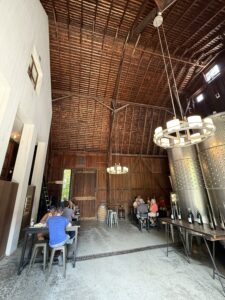
At Hermann Wiemer Vineyards along Keuka Lake, we tried a flight of wines served inside the winery next to the massive steel tanks where the wine is fermented.
Again, Rieslings abound as well as Chardonnay and Cabernet Franc. The Chardonnay was crisp and dry and the Cabernet Franc was medium bodied with a lot of acidity.
For another flavor of the Finger Lakes region, we cruise to The Windmill Farm & Craft Market located near Pen Yan near Keuka and Seneca Lakes. We wander along the 175 indoor and outdoor shops where we find hand crafted items and food, many produced by the local Amish community. Along the way in some of the more rural areas, we see a horse drawn buggy driven by young Amish boy.
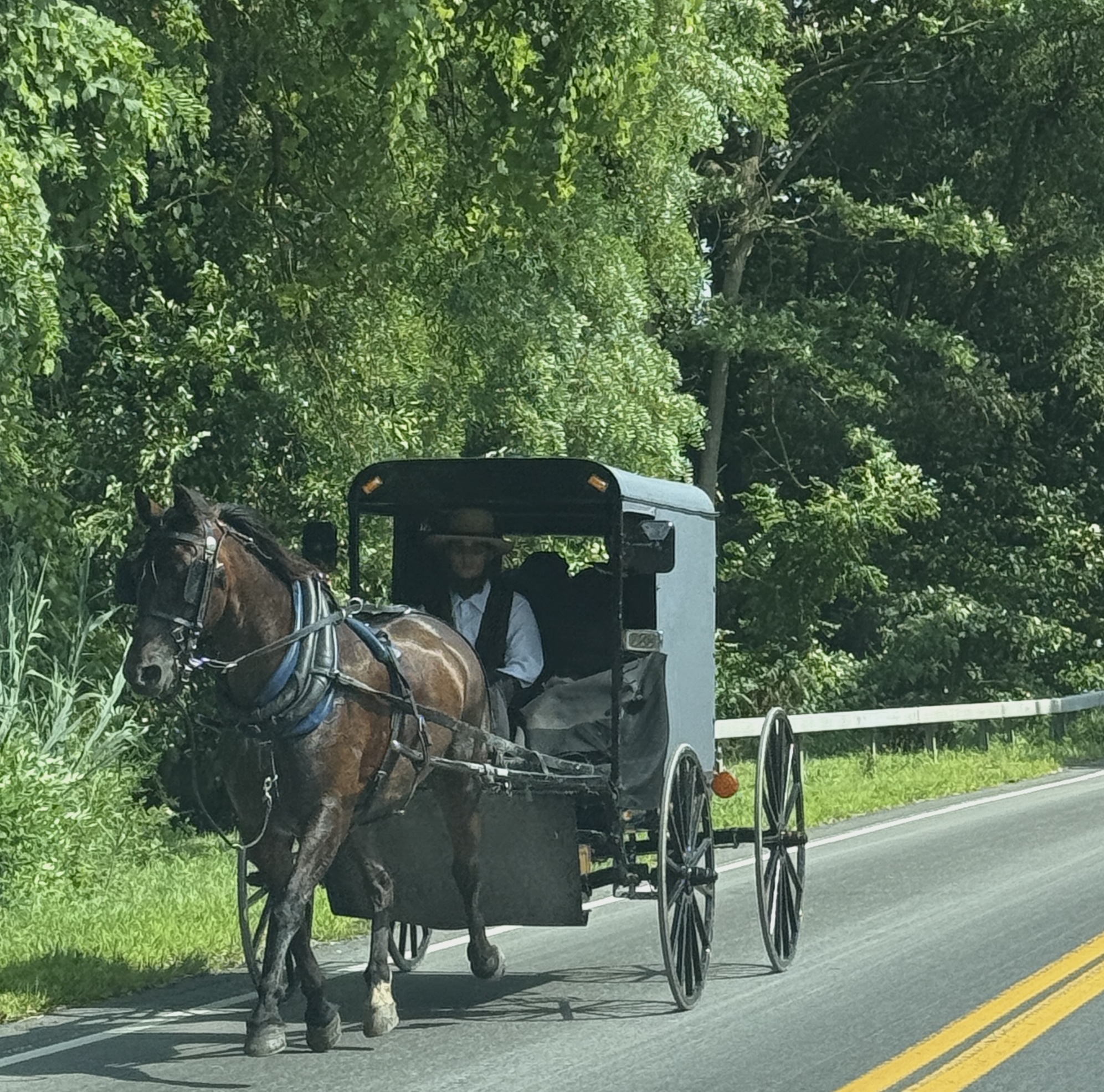
As we traveled along the out-of-the-way winding country roads lined with crops, we felt immersed in the agricultural background of this region. We were only able to take in a smattering of what makes the Finger Lakes region so special.
We vowed a trip back to this region in the fall was a must to take in the changing foliage and leaf peeping of the area. We also had 172 more wineries to try.
